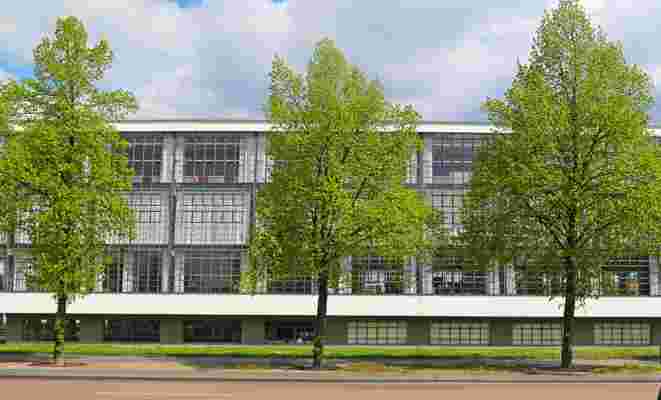November 15,2022
Why Anyone Who Loves Design Should Visit Bauhaus Dessau
by David Stewart
German architect Walter Gropius founded the Bauhaus school in 1919 with the intent of reimagining the material world by integrating all of the arts. The guiding principle of combining, say, architecture, furniture, and typography with new technologies was, in his words, “that design is neither an intellectual nor a material affair, but simply an integral part of the stuff of life, necessary for everyone in a civilized society.”
Originally located in Weimar, the Bauhaus moved in 1925 to a new building in Dessau designed by Gropius, whose innovative use there of industrial sash, glass curtain walls, and an asymmetrical pinwheel design forged an unforgettable path in the development of what we now call modernism and the International Style.
Bauhaus’s famed faculty included (to name just a few) Paul Klee, Oskar Schlemmer, Wassily Kandinsky, Josef Albers, Marianne Brandt, Henry van de Velde, and Ludwig Mies van der Rohe, who was the school’s last director prior to its closure in 1933. Gropius, Albers, Bayer, and Mies van der Rohe would later move to the U.S. to practice and teach what they preached in celebrating the integration of all the disciplines of design.
Join me on a tour of a remarkable piece of design history.









